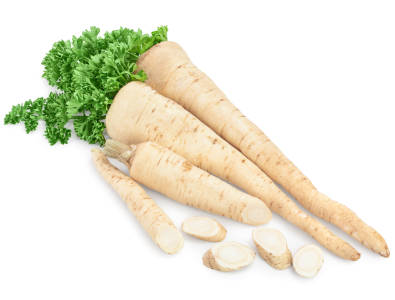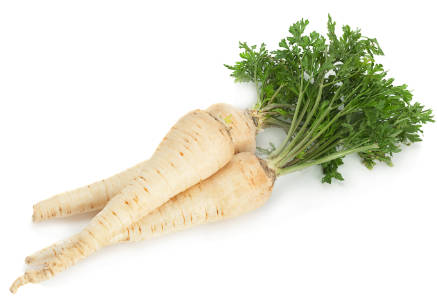Vegetables Category

Vegetables is a catch-all category that includes many of the edible parts of a plant, like stems, roots, flowers, tubers, and leaves. Some biological fruits that aren't very sweet, like tomatoes, squash, peppers, eggplants, and beans, are considered by cooks to be vegetables.
moap patora
This is a variety of winter squash common to south Asia. It has a mildly sweet flavor.
Learn moremorels
Morels are highly prized for their rich, earthy flavor, and also because their caps are hollow, which allows them to be stuffed. Dried morels are very flavorful, and they're an excellent substitute for fresh in sauces and stews.
Learn moremorita pepper
Like the larger mora chili, this is a smoked and dried red jalapeno. It's very hot.
Learn moreMoroccan dry-cured olives
These are shriveled black olives that are somewhat bitter. They're best used for cooking rather than snacking.
Learn moremulato chili
This very popular chili looks like the ancho, but it's darker and sweeter. It's fairly mild and has an earthy flavor.
Learn moremung bean sprouts
These are the large sprouts that are common in supermarkets. They're crisp and nutty, and they're the best sprouts for stir-frying, though they can also be served raw. Select bean sprouts that are crisp and white with just a tinge of yellow. To keep them fresh, rinse them off and immerse them in cold water, then store them in the refrigerator. They're very perishable, so try to use them within a day or two. Canned bean sprouts are a very poor substitute for fresh.
Learn moremushrooms
Markets stock a variety of cultivated mushrooms, but many people prefer wild mushrooms, which are often more flavorful. Be careful when picking wild mushrooms (some species are poisonous) and always cook them thoroughly, both to release their flavors and to convert their proteins into a more usable form. To prepare fresh mushrooms, first trim off the bottoms of the stems, then wipe them off. Don't rinse or soak them, for they'll absorb water and turn mushy when you cook them. Dried mushrooms are often excellent substitutes for fresh, though some species don't dry well. You can reconstitute dried mushrooms by soaking or simmering them. Don't throw out the soaking liquid--it can add more flavor to your sauce than the mushrooms themselves. You can also pulverize dried mushrooms with a food processor or blender, then use the mushroom powder to flavor sauces and stews. To learn about various varieties of mushrooms, click here.
Learn moremustard greens
These are more popular in the South than in the rest of the country. There are red and green varieties, and both have a peppery bite. If the greens are too pungent for your taste, you can tame them by blanching them in salted water.
Learn morenameko mushroom
Nameko mushrooms are hard to find fresh, but Asian markets sometimes stock cans or plastic bags of it. They have a gelatinous texture and the Japanese like to add them to miso soup.
Learn morenapa cabbage
Like bok choy, napa cabbage is a common ingredient in Asian stir-fries. It can also be used as a milder and more delicate alternative to green cabbage in slaws and other recipes
Learn morenettles
Nettles have long been used in Europe as a substitute for spinach or kale, but they're tricky to use. The tips contain formic acid, a nasty irritant that can give you a serious rash on the outside and cause even more damage on the inside. You can remove the formic acid by cooking and/or soaking the nettles, but don't try this unless you know what you're doing. If you're harvesting your own nettle leaves, select young ones.
Learn moreNew Mexico green chili
These large chilies are similar in size to Anaheims, but they're hotter. New Mexico green chilies peak in the late summer, while the hotter New Mexico red chilies appear in the fall. These are moderately hot.
Learn moreNew Mexico red chili
These chilies have an earthy flavor and resemble the California chili, except they're hotter and more flavorful. They are moderately hot.
Learn morenew potatoes
The term "new potatoes" is sometimes used to describe all small waxy potatoes, but technically it refers just to immature potatoes harvested in the spring and early summer. You can tell if a potato is truly new by its skin; immature potatoes have flimsy, parchment-like skins that you can peel off with your fingers. New potatoes are prized for their high moisture content and creamy texture, and because they can be cooked whole. They're especially good steamed or roasted. They're more perishable than other potatoes, so use them within a few days after buying them.
Learn moreNicoise olives
A key ingredient in Salade Niçoise, these small purplish-black olives have a distinctive sour flavor. They're great in tapenades.
Learn morenopales
The canned version is acceptable substitute for fresh, but it has an inferior texture.
Learn moreNyon olives
These black olives from France are salt-cured, which makes them wrinkly and more bitter than standard lye-cured American black olives.
Learn moreoakleaf lettuce
Oakleaf lettuce has crunchy stems and tender leaves. There are red and green varieties.
Learn moreoca potato
Oca potatoes are root vegetables that are popular in New Zealand. They come in a range of colors, inclucing pink, yellow, orange and most commonly, red. Oca can be eaten raw or cooked.
Learn moreOkinawan purple potato
The flesh of this tropical Asian sweet potato is vivid purple. It's perfect for tempura, but it can also be baked, sauteed, boiled, steamed, or mashed. It is very popular in desserts in the Philippines where it is know as ube.
Learn moreokra
When cooked, okra exudes a slimy substance, which serves as a wonderful thickener in stews. Unfortunately, that sliminess puts off many diners, but you can minimize it by buying small, fresh okra and by cooking it very briefly. Okra's popular in the South, where they fry it in cornmeal, pickle it (this also gets rid of the sliminess), and use it to thicken their gumbos.
Learn moreOlives
A staple of Mediterranean cuisines, olives are most often eaten out of hand, though cooks also use them to flavor everything from pizzas to martinis. Raw olives must be cured before they can be eaten, and the curing medium--usually lye, brine, or salt--affects their flavor and texture. So too does the olive's degree of ripeness when it's picked. Green olives are picked while unripe, which makes them denser and more bitter than brown or black olives, which stay on the tree until fully ripened. Olives become bitter if they're cooked too long, so always add them to hot dishes at the last minute. Opened cans or jars of olives should be refrigerated, but some olives can be stored at room temperature if they're submerged in brine or olive oil.
Learn moreonion flakes
These are onions that have been chopped and then dehydrated. They lack much of the pungency of fresh onions, but they're convenient and great for backpacking.
Learn moreoyster mushroom
Oyster mushrooms are prized for their smooth texture and subtle, oyster-like flavor. They can also be grown commercially, so they're widely available and fairly inexpensive.
Learn moreoyster plant
These hard to find and expensive leaves taste a little like oysters. Oyster plants are low growing perennial herb in the borage family.
Learn moreparsley root
This is hard to find in the United States, but it's a popular root vegetable in Central Europe. For more information, see the Wegman's Food Market's page on Parsley Root.
Learn moreparsnip
These are like carrots, except that they're cream-colored and never served raw. Northern Europeans like to add them to stews, but they can also be puréed or served as a side dish. Choose small, crisp ones.
Learn morepasilla chili
This is the dried version of the chilaca chili. It's mild, long, black, and wrinkled, and a standard ingredient in mole sauces. Ancho chilies are sometimes mislabeled as pasillas.
Learn morepattypan squash
These have a pleasant, nutty flavor. They're small enough to grill whole, but lots of recipes call for them to be hollowed out, stuffed, and baked. There are green and yellow varieties; yellow ones are sometimes called sunburst squash.
Learn morepea eggplants
These tiny Thai eggplants are quite bitter. They're sold in clusters and look like large green peas. You can find them fresh in Thai markets, or buy them pickled in jars.
Learn morepearl onion
These tiny onions are sweet and mild. About one inch in diameter, they're often pickled or creamed.
Learn more




































































































































































































































































































































































